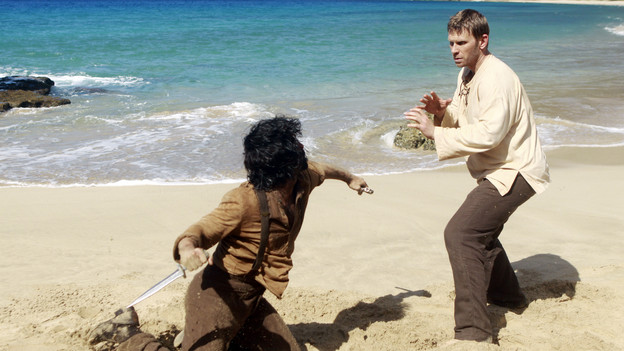The penultimate show of Conan O’Brien’s Legally Prohibited from Being Funny on Television tour sold out Radio City Music Hall last night with an interesting mix of comedy and music. The audience was a mix of real-life enthusiasm against the typical coldness of a New York crowd. Both adoring and jaded, the crowd could be simultaneously under and over-enthusiastic in that way that only New York City crowds tend to be.
The understated comedy highlight of the show, for me at least, was Andy Richter strolling out to the dulcet tones of Eduard Anatolyevich Khil (aka Trolololo Guy) and his narration of an “advertisement” for New Yorks third-best Grey’s Papaya ripoff.

Author: Andrew Raff
Farewell, Craphole Island
Some brief thoughts on the series finale of Lost coming up just as soon as I re-read Cat’s Cradle
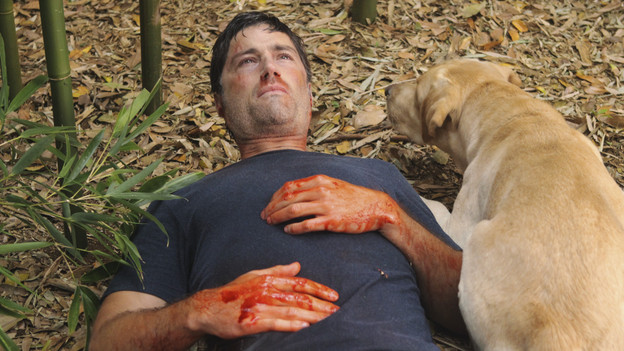
You All Everybody
Tonight’s Lost-related festivities lack the amount of “Previously on Lost” rocking out as desired (that sold out incredibly quickly), so instead it kicked off here at BRR World HQ with a relatively Island-inspired dinner. (With less wild boar than a truly Island-inspired feast might have.)
Teriyaki marinated wild salmon with mango, onion, tomato and avocado. Served with asparagus, rice and salad. OK, salmon isn’t all that Island-specific, but it paired nicely with the Dharma Initiative branded Merlot.
Watching the clip show, it’s pretty clear that Lost is particularly unique in television history. Since having the most expensive pilot in broadcast television history, Lost is one of the last shows to film on 35mm film, rather than HD digital video, and may be the end of an era in large scale production for network television. Aside from The Simpsons, does any other show use a full orchestra score as much? Is anything else on broadcast as ambitious as Lost? On HBO and AMC, Breaking Bad, mad Men, Treme, as well as the forthcoming Boardwalk Empire and Game of Thrones may have comparable levels of ambition. But will any of these ever be as widely watched as Lost?
But what makes Lost so special is the breadth of the depth of the fandom. While it may not be the most watched show on television, it must be the most popular show that has such a high percentage of devoted fans.
After the jump, 10 Favorite Lost episodes (inspired by Todd VanDerWerff’s ranking of all 110 episodes at the LA Times.
119 Down, One to Go
Lost has always been a show that has posed far more questions than it has answered. The prior seasons have always pulled back the scale of the narrative rather than simply closing out a single story. Let’s sit around the fire and discuss some very rough thoughts about the episode after the break…
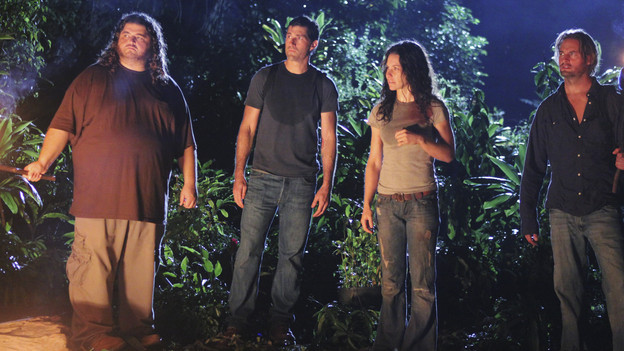
Casting Cars
Breaking Bad is undoubtedly one of the best acted shows on television; led by two-time Emmy-winner Bryan Cranston, Aaron Paul, Anna Gunn, Dean Norris and Bob Odenkirk give some of the best performance on the small screen. The show is one of the best looking with its use of vistas of New Mexico — different enough from Southern California, Vancouver or New York to be striking. But one of the best, least heralded aspects of the show is how well the production team selects the cars that its characters drive.
Someone’s car can say a lot about their personality. A BMW driver is likely to be a bit arrogant, but less so than a Porsche driver. A Volvo owner is concerned with safety. A Prius owner wants to save the environment, while a Hummer owner wants to exhibit his dominion over the environment. A Toyota Camry owner doesn’t enjoy driving. Someone who lives in Brooklyn is likely to drive a Subaru or a Mini. Someone from Detroit, something American.
Each of Breaking Bad’s characters’ choice of cars says something about that character. Walt’s Pontiac Aztec was the ugliest car of the early 21st Century. As such, he was probably able to buy it relatively inexpensively (because who really ever wanted n Aztec?) But he likely saw the sense in the practical style of the car. The sound mix of the four cylinder engine and slushbox that the show used, especially in the first season, carries a distinctive sense of patheticness.
Saul Goodman drives a Cadillac, Marie a New Beetle, Hank a new Jeep, and Skyler a classic Jeep. Each of these cars fits the characters perfectly. Of course Gus drives a Volvo. And the Winnebago Meth Lab is as much of a character in the show as any of the other locations or actors.
From tonight’s episode, Jesse pulls out of a parking lot in his Toyota wagon with its single windshield wiper is a perfect vehicle for where the character is by the end of this episode.
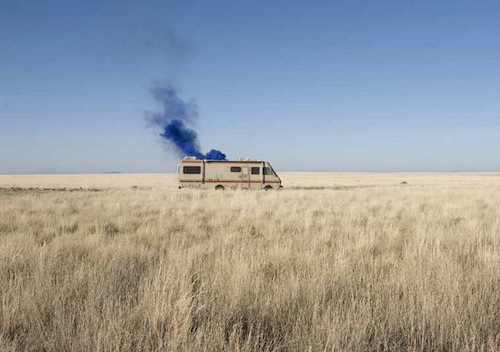
Mr. Cluck’s Double Down
Grab a family sized bucket of chicken to take to the other side of the break and discuss the 12th episode of Lost season 6, “Everybody Loves Hugo”
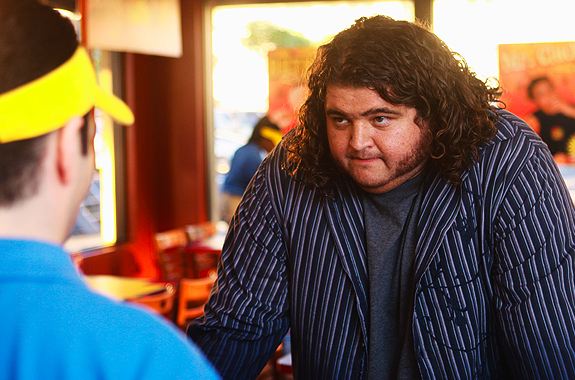
Miniboone at Fort Useless
Friday night, I travelled out to a quiet street in Bushwick to see MiniBoone at Fort Useless. After hearing nothing but good things about the band, the name settled into my consciousness enough to trek out to the wilds served only by the J/M/Z line.
The five-piece band is a loud blast of raucous energy, straight out of the new wave tradition. They combine the furious energy of punk with a devoted commitment to melody and giving every song a strong melodic hook.
I tend to connect more with bands that feature some amount of multi-instrumentalism — where the group’s sonic palette changes because members pick up different instruments, or different members sing lead on certain songs. And Miniboone does this, Each of the three guitar/keyboard plays sings lead on different songs and they all shift around from one instrument to the other, also adding in extra percussion and melodica at appropriate times.

A couple words about Fort Useless, a new-ish DIY party space in Bushwick. Run by Jeremiah from Stereoactive NYC, Fort Useless is an intimate space that is a welcoming party environment, rather than a club. Bands play through a PA system with only two main speakers, no monitors on the floor, not on a stage. And playing in this kind of environment gives the bands more of a connection with the audience and a looser energy.
Miniboone’s latest album, Big Changes is out now on Drug Front Records
Here’s their video for Cool Kids Cut Out Of the Heart Itself
MiniBoone: Cool Kids Cut Out of the Heart Itself Music Video from MiniBoone on Vimeo.
Treme
Not waiting long after the show’s debut on Sunday, HBO announced that it picked up a second season of Treme today.
Just as the inside of a flooded house is the ideal breeding ground for mold, post-Katrina New Orleans seems to be the ideal subject for a David Simon series.
On the one hand, Treme is a very different show than The Wire. Despite Wire fans wanting more, Treme isn’t centered around a police task force running a long investigation on one crime syndicate per season. Treme follows a disparate mix of musicians and citizens. But, it shares a definite thematic link with The Wire in the opportunity to tell stories that focus on institutions and how institutions can fail people.
If Deadwood told the story of a society coming together and developing institutions, and The Wire is the story of institutions having grown up and having their own inertia, Treme looks to be the story of rebuilding a society after it has been catastrophically failed by its institutions. It shows how civil society has broken down in some ways, developed its own norms in others, and continues in accordance with tradition in other ways.
Upon returning to the city in October 2005 (two months after Katrina, and one month before the first episode of Treme), Ernie The Attorney blogged, New Orleans – Returning home:
New Orleans will never be the same. And yet, at the same time, it will always be the same. Is that a contradiction? Probably, but then so is this city. If you lived here and you understood the city then you’ll know what I’m talking about. If you haven’t lived here and want to understand then come see what’s going on. It’s pretty amazing, but unfortunately I don’t even have an image to describe it. All I can say is that it’s worth being close to.
New Orleans is coming back to life. Have you ever witnessed the rebirth of a city? Creation of any kind is very hard to explain, especially when it happens to an entire community. So I won’t try. But if you are interested you should come here and see what’s going on. If you stand perfectly still and close your eyes you can feel the magic flowing in and saturating everything from the deepest soil to the tallest limbs.
Treme may be a more personal series than The Wire and focus on people as people rather than as members of their institutions, but this will be a show about society and how it rebuilds. And I expect David Simon, Eric Overmeyer and the producers, cast and crew of Treme to tell those stories well.
Links
HBO’s ‘Treme’ creator David Simon explains it all for you
Dave Walker, The Times-Picayune, HBO’s ‘Treme’ finally gets New Orleans right, “This is the screen depiction that New Orleans deserves, has always desired, but has been denied.”
Walker is also running a blog post after each episode to explain the local references and traditions to the rest of us, HBO’s ‘Treme’ explained: ‘Do You Know What it Means to Miss New Orleans?’
James Poniewozik, Time Magazine, HBO’s Treme: “New Orleans is not Baltimore, but it’s a great and troubled city whose flood pointed out the failings of government–heckuva job, Brownie–and the lingering racial imbalances in America.”
Alan Sepinwall, Treme, “Do You Know What It Means”: The ‘n’ is for ‘nuance’: “It helps that we start off with a somewhat more famous cast this time around. You see, for instance, John Goodman’s Creighton going all Walter Sobchek on the British camera crew and you have many of the fine points of that character.”
Ben Collins, MTV News ‘Treme’ Music Recap: Death, Resilience And Broken Hearts
See you in another life, brotha
Continuing the trend of Desmond-centric episodes being great, “Happily Ever After” brought a whole side of the family to dinner who we hadn’t seen much of this season.
Grab a glass of 60 year scotch and set sail to the spoilers coming up for “Happily Ever After” (Lost Season 6, Episode 11)
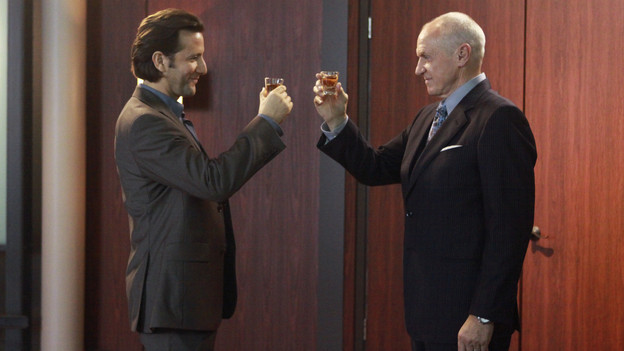
Batmanuel of the South Pacific
Lost – “Ab Aeterno”
Is this the first episode of Lost not to spend any time in any plot thread on the Island and just be largely an extended flashback, albeit a flashback on the Island?
Grab your spoon and decanter of wine and let’s head to spoiler island after the break
